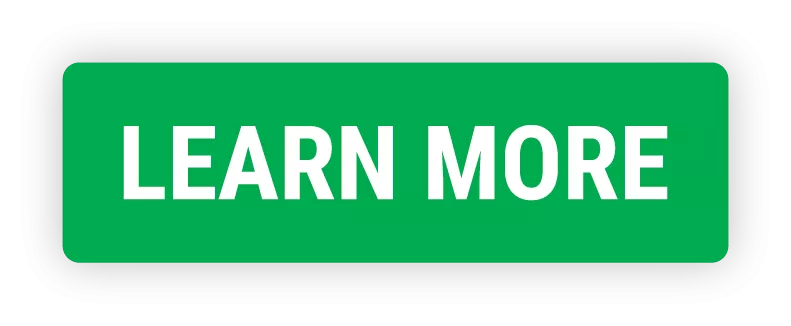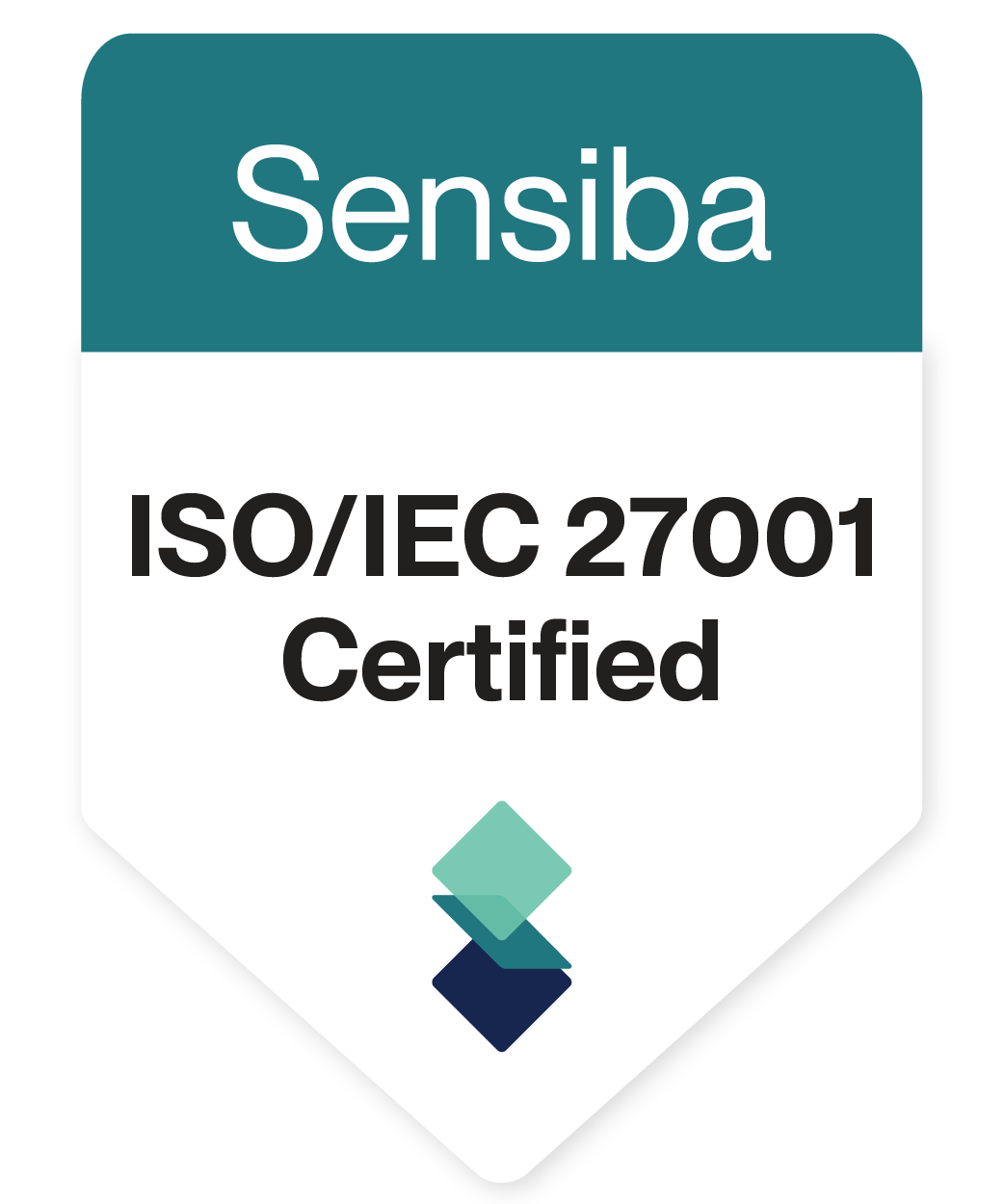Feedback is supposed to build trust. It’s supposed to spark growth. It’s supposed to be the heartbeat of a healthy culture.
But for most teams? It’s still a source of confusion, anxiety, or silence.
Organizations have invested heavily in feedback training—frameworks, models, scripts. Yet across industries, HR leaders and people managers report the same problem: the conversations still aren’t happening. And when they do, they often backfire.
One L&D leader put it bluntly: “We stopped doing annual reviews to create a culture of feedback—and now no one gives any.”
This isn’t an outlier. It’s a pattern. Many companies have made structural shifts—removing rigid performance cycles, launching manager training—but haven’t filled the behavioral and relational gaps that actually enable feedback to flow.
The disconnect isn’t about knowledge. It’s about behavior.
In today’s hybrid, fast-moving, emotionally complex workplaces, feedback can’t be one-size-fits-all. It can’t be reserved for performance reviews. And it definitely can’t be delivered without understanding how someone best receives and responds to input.
This is the tension. Leaders want coaching cultures. Employees want to grow. But without consistent, personalized, in-the-work reinforcement, feedback will keep failing—even with the best of intentions.
Get the free guide to close your leadership development gap and build the trust, collaboration, and skills your leaders need to thrive.
Why Feedback Doesn’t Land Even When It’s Well-Intended
Most feedback failures aren’t caused by lack of skill. They’re caused by lack of trust.
The truth is, people know how to give feedback. They’ve been through the training. They’ve practiced the sandwich method, learned the SBI model, maybe even role-played difficult conversations. But when it comes time to apply it? They hesitate—or they miss the mark.
As one leader shared, “The worst feedback I ever got was based on an assumption—without a conversation first.” – Michelle Tillis Lederman
That quote reveals the heart of the issue: feedback doesn’t land when it feels like judgment without understanding.
Too often, feedback is rushed. Delivered with certainty instead of curiosity. It becomes something that happens to someone—not with them or for them.
Why? Because feedback is fundamentally relational. And too often, it’s treated like a transaction.
Instead of conversations that build clarity and connection, people default to vague praise, blunt critiques, or total silence. Feedback feels risky, one-sided, or out of sync with the moment. It happens to someone, not for them. That’s when defensiveness sets in—and growth shuts down.
What’s missing isn’t more frameworks. It’s follow-through. It’s the micro-habits of reflection and curiosity. It’s the personalization that shows people you see them—not just their performance. Without that foundation, feedback can’t land—no matter how carefully it’s worded.
Make Team Development More Impactful
See How High Performing Teams Use Tech To Equip Their Leaders

How To Give Feedback That Is Welcomed By Teammates
Feedback isn’t a form. It’s not a rating. And it’s not a moment to prove you’re right.
It’s a chance to deepen the relationship—and help someone grow with clarity and confidence.
As leadership author Joe Hirsch puts it, great feedback “shows people where to look—not what to see.”
That’s the difference between performance management and relational development.
The most effective feedback isn’t about certainty. It’s about curiosity. It’s not “Here’s what you did wrong.” It’s “Help me understand what you were aiming for—and let’s explore how it could be even stronger.”
This shift, from performance to partnership, changes everything.
Because when feedback is rooted in relationship, it invites reflection. It disarms defensiveness. And it leads to ownership, not resistance.
The starting point? Don’t ask, What do I need to say? Ask, How will this person best receive it?
- Are they energized by challenge—or do they need time to reflect?
- Do they crave clarity—or connection?
- Are they motivated by recognition, improvement, alignment, autonomy?
That’s where most feedback efforts stalls out, not because leaders don’t care, but because they forget to adapt the message to the person.
Great feedback doesn’t start with what you say. It starts with understanding who the other person is. Assessment tools like DISC, Enneagram, and 16 Types don’t just describe people. They show you how to lead them.
These aren’t personality labels—they’re maps for how someone handles tension, motivation, and connection. These types of insight can help leaders craft feedback that is meaningful instead of mechanical.
- If you’re giving feedback to a high-D in DISC, they’ll respond to directness and clarity. Delay or vagueness reads as weakness.
- A Type 9 on the Enneagram? They may avoid conflict—and need reassurance that feedback doesn’t equal disconnection.
- An INTJ from the 16 Types framework? They value competence and strategic thinking. Show them how feedback connects to their bigger-picture goals.
Feedback shouldn’t just be delivered. It should land. And that only happens when you know what drives someone and what’s likely to knock them off course.
How To Implement Feedback Into The Flow Of Work
Personalize Feedback to Personality
The first step is knowing who you’re talking to, not just what you need to say.
Feedback that lands well is shaped by how someone processes information, handles emotion, and defines growth. That’s not soft science. It’s practical awareness.
Most feedback training treats people like they’ll all respond the same way to input—as if structure alone guarantees impact.
But in practice, the same words land very differently depending on who hears them.
This is where personality insights become real tools for relational leadership.
These differences aren’t preferences. They’re patterns of perception. When you name them, you unlock better conversations.
Simple language shifts go a long way:
- “Help me understand your approach here…”
- “I believe in your strengths, and I think you can push this even further.”
These kinds of phrases signal trust, not control. They invite collaboration instead of critique.
Feedback without personality insight is like coaching blindfolded. The more you see, the better it lands.
Build Feedback Into the Flow of Work, Not Just the 1:1
When feedback becomes a formal event, it becomes a stressful one.
Leaders hold back until it “matters.” Teammates brace for impact. And the opportunity to grow in real time slips by.
The fix isn’t another training. It’s a rhythm that reduces friction with practicing feedback.
- In Slack or Teams: A prompt before or after meetings: “Was there a moment of great collaboration or misalignment today?” One sentence. No scorecard.
- At the end of a project sprint: A 5-minute retro focused not just on what worked, but who contributed in a way worth reinforcing.
- As part of tool integrations: Nudges based on personality insight that help a manager shift from “I need to give feedback” to “Here’s how I make it meaningful for this person.”
These are low-effort, high-impact feedback loops that don’t rely on memory, courage, or perfect timing. They’re built into the way people already work—and reinforced with insight that helps the message land.
The key isn’t formality. It’s frequency and intent.
Feedback should happen when context is fresh, tension is low, and reflection is easy. If you’re waiting for a quarterly review to give input, you’ve already missed the moment.
This is where tools like Cloverleaf help. Nudges surface relevant personality insights tied to daily collaboration. Managers don’t have to remember what to say. They get reminded how to connect.
Most leaders want to give good feedback. What they need is help doing it consistently, without carrying all the weight alone.
Look for the Signals of a Feedback Culture
You probably do not need a new engagement survey to know if your feedback culture is working. You just need to look at what people are doing—and saying—differently.
Too many feedback initiatives get evaluated on rollout metrics: how many people attended training, how many reviews were completed on time.
None of that tells you whether feedback is actually changing anything.
A better measure of success is this: Are people showing up differently because of the conversations they’re having?
Look for these signals instead:
- Language shift: Are people using more specific, behavior-based language?
- Ownership: Are teammates reflecting before reacting? Are managers following up?
- Initiation: Is feedback being offered without a formal request or manager prompt?
Success isn’t just more feedback. It’s better feedback—timely, actionable, and mutual.
Track what matters:
- Frequency and quality of feedback conversations
- Use of nudges or personalized insights in the flow of work
- Peer to peer feedback and upward coaching moments
If feedback is happening, growing, and building trust, you’ll see it. Not just in surveys but in behavior.
Use Tools That Reinforce Feedback Practices
You’ve trained your team. Cloverleaf helps them apply it.
Most feedback training stops at content. Cloverleaf goes further—embedding relational intelligence in the day-to-day interactions where feedback actually lives.
loverleaf doesn’t just describe how someone’s wired—it shows you how to lead them better, in the exact moment it matters. This is real-time, in-the-work coaching based on who you’re talking to, not just what their role is.
How will this person hear what you’re about to say? Cloverleaf helps you get that right.
“Feedback tips” can only help so much. People need relational intelligence, in context, in real time.
It’s not advice in a vacuum. It’s tailored coaching—based on who you’re working with, what’s happening, and how it’s likely to play out.
Here’s what that looks like in action:
- A calendar nudge before a tough meeting—not just a reminder, but guidance on how your teammates communicate and handle conflict, so you show up prepared.
- A reflection prompt after a project handoff that considers your teammate’s actual processing style, whether they need affirmation first, space to reflect, or direct action-oriented feedback.
- A personalized coaching moment that guides you on how to phrase input so it aligns with your colleague’s DISC, Enneagram, or 16 Types profile—not just what sounds good in theory, but what this person will actually hear and respond to.
Cloverleaf doesn’t just understand personality. It understands the personal dynamics of your team, in the exact moment they matter.
Cloverleaf connects how people feel with how they behave—so teams can work through friction, not around it. It doesn’t just describe how your people work. It coaches them, live, through the moments where things often go sideways.
Because the hardest part of feedback isn’t what to say. It’s knowing how to say it, when to say it, and how it will be received.
Want to see what this looks like inside your team’s day-to-day?
Take a self-guided tour of Cloverleaf and experience how real-time coaching shows up in the moments feedback matters most.
Effective Feedback Is Always Personal, Timely, and Rooted in Trust
What’s holding feedback back isn’t a lack of knowledge. It’s the absence of safe, repeatable habits that match how people actually work—and how they’re wired.
Organizations don’t need another framework. They need to build the muscle for real-time, relational feedback. The kind that doesn’t wait for review cycles. The kind that doesn’t assume one-size-fits-all. The kind that makes people feel seen, not judged.
It starts with curiosity.
It gets better with personalization.
And it sticks when it becomes part of how work actually gets done.
The best feedback isn’t just timely or well-phrased. It’s built on trust—because it honors who someone is while helping them grow.
Or as one people leader expert said: “It’s hard for anything to matter if people don’t feel like they matter.” – Tamara Myles
That’s what we’re really solving for.
🙋 FAQ
Q. How do I know if feedback is actually landing?
A. Don’t rely on polite nods or “thanks for the feedback” replies. Look at what happens after the conversation.
Did the person follow up? Did they adjust their approach? Are they referencing the input in future work?
When feedback lands, it shows up in behavior—reflection, ownership, and change. That’s your signal.
Q. What if two team members have totally different feedback styles?
A. Treating everyone the same is what breaks feedback. One person wants clear direction. Another needs time to reflect. What works for one can shut down another.
That’s why personality insight matters. Tools like Cloverleaf help you understand how each person receives input—so you can tailor the delivery without diluting the message.
You don’t need a different script for everyone. You need a different approach for each person.
Q. How do I make feedback feel less awkward without watering it down?
A. Awkwardness usually comes from guessing. When you understand what someone values—and how they process input—you don’t have to dance around the message.
Start with curiosity. Name your intent. Keep it specific and forward-looking.
“It’s important to me that we keep improving—and I think there’s something here we can sharpen together.”
It’s not about softening. It’s about connecting.
Q. What’s one small change I can make to start giving better feedback today?
A. Encourage a daily habit: a simple nudge, reflection, or personalized comment that builds the muscle for real-time feedback.
Start by giving one piece of specific, personal feedback this week. Use a simple prompt:
“One thing I appreciated in that meeting was…” or
“Here’s something I think could make this even stronger…”
Small, consistent moments build trust. That’s what makes feedback stick.
Conflict is one of the biggest drains on workplace performance—yet most managers aren’t trained to handle it effectively.
📌 Civility Index Score: 46.1, with 65% of workers saying managers prioritize business goals over respectful treatment (SHRM).
📌 46% of managers are expected to provide more constructive feedback, but only 28% feel HR has adequately trained them to do so (Lattice State of People Strategy Report).
📌 Organizations that invest in leadership development to improve conflict resolution training—see an 11% increase in profitability (Gallup).
Despite the clear impact on engagement, productivity, and retention, conflict resolution is rarely treated as a core leadership competency. Instead of providing structured training, most organizations expect managers to navigate difficult conversations on their own—leading to avoidance, frustration, and unnecessary turnover.
Why This Approach Is Costing Companies More Than They Realize
Organizations that take a proactive approach to equip managers with conflict resolution skills and real-time coaching—see measurable business results:
✅ Stronger team performance: Conflict becomes a source of innovation, not dysfunction.
✅ Higher retention: Employees feel heard, valued, and supported in resolving challenges.
✅ Faster decision-making: Issues are addressed productively rather than festering.
This article will explore why conflict resolution training for managers is challenging to implement, how to make conflict resolution a leadership strength, and the best strategies to help managers confidently handle tough situations.
Get the full guide to Talent Development in the Age of AI to empower your managers to navigate tough conversations with confidence.
The Heavy Costs of Poor Conflict Management
Workplace conflict isn’t just uncomfortable—it’s expensive. When tensions go unresolved, they erode trust, stall productivity, and increase turnover. Yet, many organizations fail to equip managers with the tools they need to navigate difficult conversations effectively.
📌 73% of HR leaders say their employees are experiencing change fatigue. Additionally, 74% agree that managers are not adequately equipped to lead change, further complicating transformation efforts (Gartner).
📌 91% of high-performing HR teams meet most or all of their managers’ needs—highlighting the impact of HR’s role in leadership support (Lattice).
📌 68% of employees say learning and development (L&D) initiatives are essential for engagement, but many organizations underinvest in developing the human skills managers need to improve conflict resolution (Lattice).
Without training training that can reinforce key insights concerning conflict resolution, managers often default to avoidance or reactive decision-making—both of which make problems worse. Instead of feeling confident to coach employees through disagreements, they sidestep difficult conversations or escalate issues to HR, leading to frustration, disengagement, and lost productivity.
Why Managers Struggle With Conflict Resolution
Most managers don’t avoid conflict because they don’t care—they avoid it because they don’t feel equipped to handle it well. Common challenges include:
✅ Lack of training – Many managers are promoted for their technical skills, not their ability to navigate interpersonal challenges.
✅ Fear of damaging relationships – Without guidance, managers worry that addressing conflict will harm team dynamics rather than improve them.
✅ No reinforcement in daily work – Even when managers receive training, it’s often a one-time event rather than an ongoing skill-building process that is relevant to their context and the people they lead.
Organizations that invest in integrating conflict resolution training into leadership development see stronger teams, better decision-making, and higher engagement. The key is empowering leaders to develop conflict management as a core leadership skill.
7 Conflict Management Skills Every Manager Needs to Master
Conflict isn’t a problem to eliminate—it’s a reality to navigate. And how managers handle it directly impacts team culture, productivity, and retention.
Yet, most managers aren’t trained in conflict resolution. Many either avoid tough conversations or address issues reactively, only stepping in when tensions reach a breaking point.
Conflict resolution is a skill that can be learned, developed, and applied in everyday leadership. Here are seven essential skills managers need to turn workplace friction into productive dialogue and stronger collaboration.
Most conflicts aren’t really about the problem itself—they’re about how people feel about the problem. And nothing fuels frustration faster than feeling unheard.
1. Active Listening: Understand Before You Respond
Effective managers don’t just hear what’s being said—they engage, clarify, and ensure understanding by:
✅ Paraphrasing what they hear to ensure understanding.
✅ Asking clarifying questions to uncover deeper concerns.
✅ Acknowledging emotions before jumping into solutions.
💡 Conflict-Savvy Leadership: Before jumping into problem-solving, focus on validating the other person’s perspective. Reflect back what you’re hearing to confirm understanding and reduce defensiveness.
For example: Instead of immediately offering solutions, try saying, It sounds like you’re frustrated because ____. Am I understanding that correctly? This small shift helps build trust and encourages a more open, productive conversation.
2. Self-Awareness: Recognize Your Own Conflict Patterns
Managers can’t guide teams through conflict if they don’t understand how they personally react to tension. Do they avoid difficult conversations? Do they become overly direct? Do they default to appeasing others?
Self-awareness is the foundation of effective conflict resolution. Managers should:
✅ Identify their own natural conflict style (e.g., avoidant, competitive, collaborative).
✅ Recognize when emotions are driving their reactions.
✅ Learn how their personality impacts how they give and receive feedback.
💡 Conflict-Savvy Leadership: Managers who know they tend to avoid conflict can challenge themselves to lean into tough conversations earlier, preventing minor issues from escalating into bigger problems.
3. Emotional Regulation: Stay Grounded in the Moment
When tensions rise, so do emotions. But great managers don’t just control their tempers—they recognize emotions as information and respond thoughtfully.
Emotional agility means:
✅ Pausing before reacting to avoid escalating the situation.
✅ Separating emotions from facts to stay objective.
✅ Coaching employees through their own emotional responses.
💡 Conflict-Savvy Leadership: When a team member gets defensive during feedback, a skilled manager doesn’t force the conversation forward—they recognize the tension and reset the tone. Try saying, I can tell this is frustrating. Let’s take a step back—what’s your biggest concern? This simple shift can lower defensiveness and open the door for a more productive discussion.
4. Conflict Style Adaptability: Adjust Your Approach to the Situation
Not everyone handles conflict the same way. Some people are direct and assertive, while others prefer a more diplomatic, consensus-driven approach. The best managers adjust their approach based on the situation and the individuals involved.
Managers should try to:
✅ Recognize different conflict styles (e.g., avoidant, competitive, accommodating, collaborative).
✅ Adapt communication to match the preferences of their team members.
✅ Encourage self-awareness so employees understand their own conflict tendencies.
💡 Conflict-Savvy Leadership: Effective managers tailor their feedback approach based on individual communication styles. A highly direct employee may respond best to a straightforward, concise approach, while others may benefit from more context and encouragement. Recognizing these differences strengthens trust and ensures feedback is both constructive and well-received.
5. Framing Conversations Productively
How managers frame a conflict can determine whether it leads to resolution or resistance.
Instead of dwelling on the problem, effective managers reframe conflicts as shared challenges to solve together.
✅ Use neutral language to avoid triggering defensiveness.
✅ Frame disagreements as shared goals rather than opposing viewpoints.
✅ Shift from blame to solutions—what’s next, rather than what went wrong?
💡 Conflict-Savvy Leadership: Rather than solely focusing on differences, a skilled manager can bring together opposite parties by highlighting shared goals: It’s clear you both want this project to succeed—let’s find a way to leverage both perspectives. This reframing shifts the focus from opposition to collaboration, making resolution more productive.
6. Addressing Tension Early Instead of Waiting for a Major Issue
Most workplace conflicts don’t start as major issues—they build up over time.
Managers who address small tensions early can prevent full-scale breakdowns in communication and collaboration.
✅ Notice small signs of conflict before they escalate (e.g., passive-aggressive emails, changes in body language).
✅ Coach team members in the moment instead of waiting for formal interventions.
✅ Encourage real-time feedback to resolve tensions quickly.
💡 Conflict-Savvy Leadership: Small tensions, if ignored, can snowball into deeper issues. Proactive managers don’t wait for formal reviews—they step in early with curiosity and care.
For example: If two team members seem at odds in meetings, a quick check-in like, I’ve noticed some friction in discussions lately. What’s your perspective on what’s happening? opens the door for resolution before conflict escalates.
7. Creating a Culture Where It’s Safe to Disagree
Conflict isn’t inherently bad—but when employees fear retaliation, rejection, or judgment, they won’t speak up, leading to resentment and disengagement.
Managers set the tone for psychological safety by:
✅ Encouraging open, honest dialogue without fear of punishment.
✅ Leading with curiosity instead of defensiveness during disagreements.
✅ Modeling vulnerability—admitting when they’re wrong or need to learn.
💡 Conflict-Savvy Leadership: A culture of open dialogue starts with how managers handle disagreement. When employees feel safe to challenge ideas without fear, innovation and trust thrive.
For example: If a manager notices hesitation in meetings, they can reframe the space for input by asking, I want to make sure we’re considering all perspectives. What’s a concern or alternate viewpoint we haven’t explored yet? This small shift signals that differing opinions are not just tolerated—they’re valued.
Conflict Can Strengthen Teams—If Managed Well
Conflict isn’t a roadblock—it’s a turning point. How a manager responds determines whether it becomes a source of tension or a catalyst for growth.
Leaders who build these seven conflict management skills can create a culture where challenges spark innovation, where tough conversations build trust, and where disagreements lead to stronger, more aligned teams.
Conflict is inevitable—but dysfunction doesn’t have to be. With the right approach, managers can turn everyday friction into momentum for their teams and organizations.
How To Empower Managers To Develop Conflict Resolution Skills In 2025
Most organizations expect managers to handle conflict well—but they struggle to equip them to do it effectively. Most conflict resolution training does not lead to behavior change because it’s event-based, overly theoretical, and isolated from real team dynamics.
Conflict resolution isn’t a script to memorize—it’s a skill that must be practiced, refined, and reinforced in real moments. To truly empower managers, conflict resolution development must:
1. Embed in Daily Work, Not Treated as a Separate Initiative
- Conflict management isn’t an abstract leadership theory—it’s a daily reality. Yet, most training happens in a vacuum, disconnected from actual workplace interactions.
- Managers need reinforcing nudges to apply what they learn—before, during, and after difficult conversations.
- Conflict resolution skills should be developed just like any other leadership skill—through repetition, reflection, and reinforcement in real situations.
💡 From Theory to Practice: Ungate training that teaches conflict management by using technology to support managers with insightful guidance when they need it most—before a tough conversation, after a miscommunication, or during a team disagreement.
2. Strengthen Collective Development, Not Just Individual Training
- Conflict resolution isn’t just a manager’s responsibility—it’s a team skill.
- When teams develop conflict skills together, they:
✅ Build a shared language for resolving tensions.
✅ Learn to navigate disagreements productively instead of avoiding them.
✅ Reduce reliance on managers as the sole problem-solvers. - Leaders don’t need to have all the answers—they need to create an environment where healthy conflict is normal and productive.
💡 From Theory to Practice: Instead of putting the full burden on managers, create opportunities for teams to practice conflict resolution together. Empower your people with tools that make collaboration and open dialogue stronger every day.
3. Personalize to Individual Strengths and Team Context
- One size fits many leadership training often doesn’t work because every manager and team operates differently.
- Effective conflict resolution training should be adapted to a leader’s natural style, their team’s unique communication norms, and the specific conflict they encounter most often.
- Confidence is key—many managers know conflict resolution techniques but hesitate to use them. Development should focus not just on skills but also on building confidence to navigate tough conversations.
💡 From Theory to Practice: Provide managers with learning and development tailored to their personality, leadership style, and real challenges—so they can handle conflict in a way that plays to their strengths.
Most managers want to handle conflict well. To truly empower them, organizations need to:
✅ Make conflict resolution a daily practice, not a one-time event.
✅ Create team-wide accountability for managing conflict, not just put it on managers.
✅ Ensure training is personalized, practical, and confidence-building.
This approach will help managers move from conflict avoidance to conflict mastery—ultimately leading to stronger teams, healthier work cultures, and more effective leadership.
What If You Could Get Along With THAT CoWorker? Take A Tour Of Cloverleaf.
The Patterns Behind Workplace Conflict (And How to Break Them)
Workplace conflict isn’t random—it follows patterns. When managers understand why tensions arise, they can address conflict before it escalates.
Here are seven common conflict triggers and how managers can navigate them effectively:
1. Communication Breakdowns
Miscommunication fuels most workplace tensions. Unclear instructions, assumptions, or missed cues create unnecessary frustration and misunderstandings.
✅ What to do: Normalize clarifying questions. Instead of assuming alignment, encourage teams to double-check expectations early.
2. Unclear Expectations
Ambiguity around roles, priorities, and ownership leads to friction and finger-pointing.
✅ What to do: Set clear expectations upfront and revisit them regularly—especially when priorities shift.
3. Workload Imbalance
When some team members feel overburdened while others seem underutilized, resentment builds.
✅ What to do: Regularly check in on workload distribution and encourage transparency when people feel stretched too thin.
4. Personality & Work Style Differences
People approach work differently. Some prioritize efficiency and results, while others focus on process and collaboration. These differences can create tension if unrecognized.
✅ What to do: Help teams understand each other’s communication styles and problem-solving approaches to prevent misinterpretations.
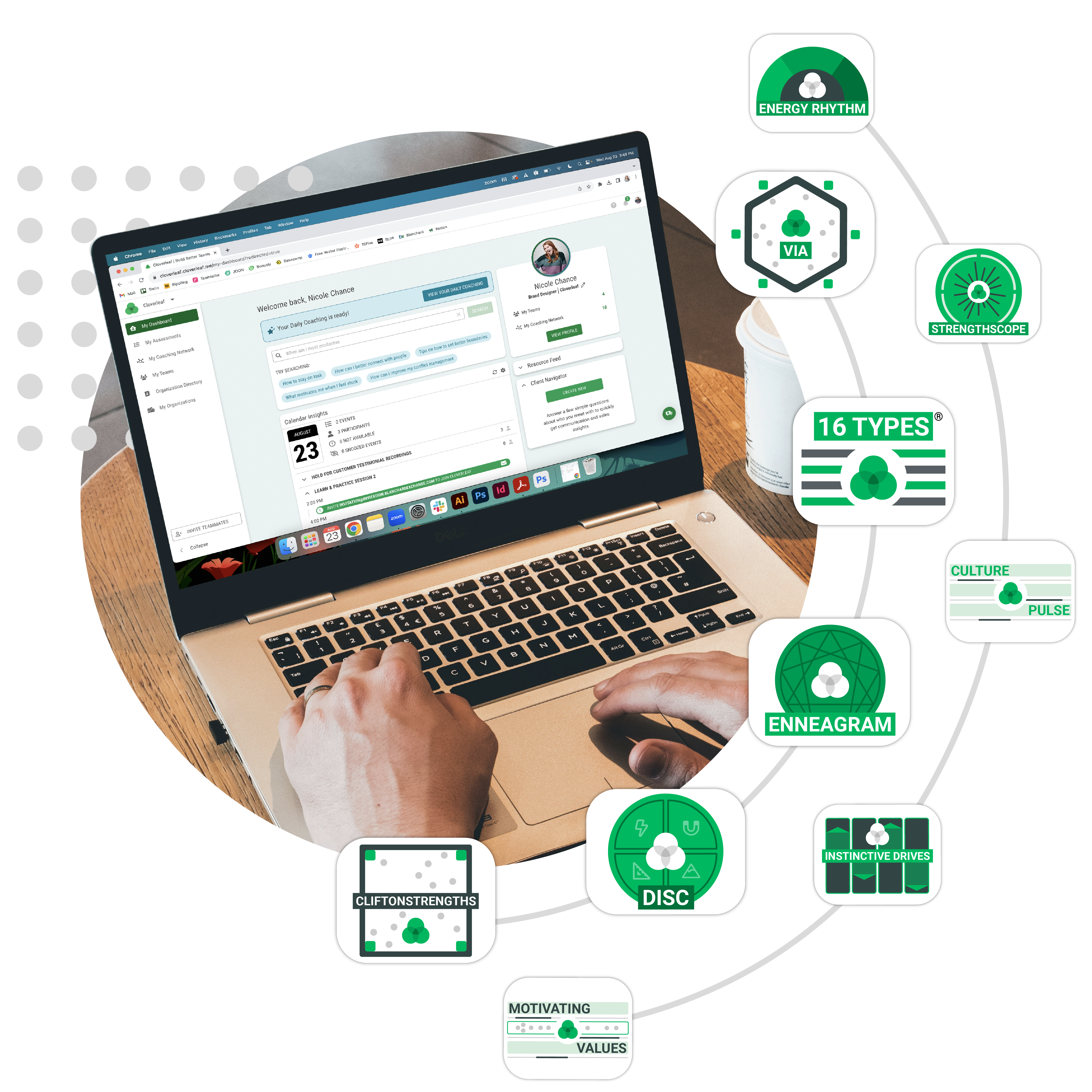
Leverage Behavioral And Strength-Based Assessments For Greater Self-Awareness In Your Organization
Tools for assessment and personal growth can be pivotal when personality issues arise. These resources can aid individuals in recognizing their areas of expertise and areas for improvement, offering insights into varied approaches to work and communication.
5. Defensive Reactions to Feedback
When employees perceive feedback as a threat rather than a tool for growth, they may react with defensiveness or withdrawal.
✅ What to do: Frame feedback as a dialogue, not a critique. Reinforce that feedback is about shared success, not personal judgment.
6. Inconsistent or Changing Processes
Frequent changes to policies, procedures, or leadership priorities can cause frustration and confusion.
✅ What to do: Be transparent about why changes are happening, and give teams space to express concerns.
7. Past Work Experiences & Unspoken Assumptions
People bring past workplace baggage into new roles. Previous toxic work environments may cause them to assume the worst in difficult situations.
✅ What to do: Create a culture where employees feel safe voicing concerns instead of making assumptions.
💡 Takeaway: Conflict isn’t about fixing people—it’s about creating clarity, alignment, and trust. Managers who recognize these patterns can turn tension into progress.
FAQs: Common Conflict Challenges & How to Handle Them
1. How do I know when to step in vs. let my team handle conflict on their own?
✅ Step in when: The conflict is harming collaboration, causing disengagement, or becoming personal.
✅ Let them navigate when: The disagreement is respectful, and team members are working toward a solution independently.
2. What if an employee refuses to engage in conflict resolution?
✅ Acknowledge their hesitation and explore why they’re resisting.
✅ Create a low-pressure, neutral space to discuss concerns.
✅ If needed, break the conversation into smaller steps rather than forcing an immediate resolution.
3. How can I help a team member who gets defensive during feedback?
✅ Make feedback specific, objective, and tied to shared goals.
✅ Acknowledge emotions without letting them derail the conversation.
✅ Shift from blame to curiosity: What feels frustrating about this feedback?
Final Thoughts: Conflict Is an Opportunity—If Managers Are Equipped to Handle It
Most workplace conflict isn’t about bad people—it’s about misaligned expectations, miscommunication, and missed opportunities for clarity.
Too often, organizations focus on minimizing conflict—but the real opportunity is learning how to use it productively.
A team that never disagrees? That’s not collaboration—that’s avoidance.
A manager who “keeps the peace” by shutting down tough conversations? That’s not leadership—that’s short-term damage control.
High-performing teams don’t eliminate conflict. They get better at having it.
✅ They challenge ideas without damaging relationships.
✅ They resolve tensions before they derail progress.
✅ They see conflict as a signal for growth, not a sign of dysfunction.
And they have managers who create the conditions for all of this to happen.
💡 The real shift in thinking? Conflict isn’t a problem to fix—it’s a skill to master.
When managers develop this skill, they don’t just reduce workplace tension—they build teams that trust each other, tackle challenges head-on, and drive better results together.
The future of leadership isn’t conflict-free. It’s conflict-capable.
How Does Cloverleaf Help Resolve Conflict In The Workplace
Cloverleaf helps teams move beyond reactive conflict management by providing context driven insights, coaching, and data-driven guidance that empower managers to anticipate, navigate, and resolve tensions before they escalate. The result? Stronger team dynamics, healthier communication, and a workplace where differences lead to innovation—not dysfunction.
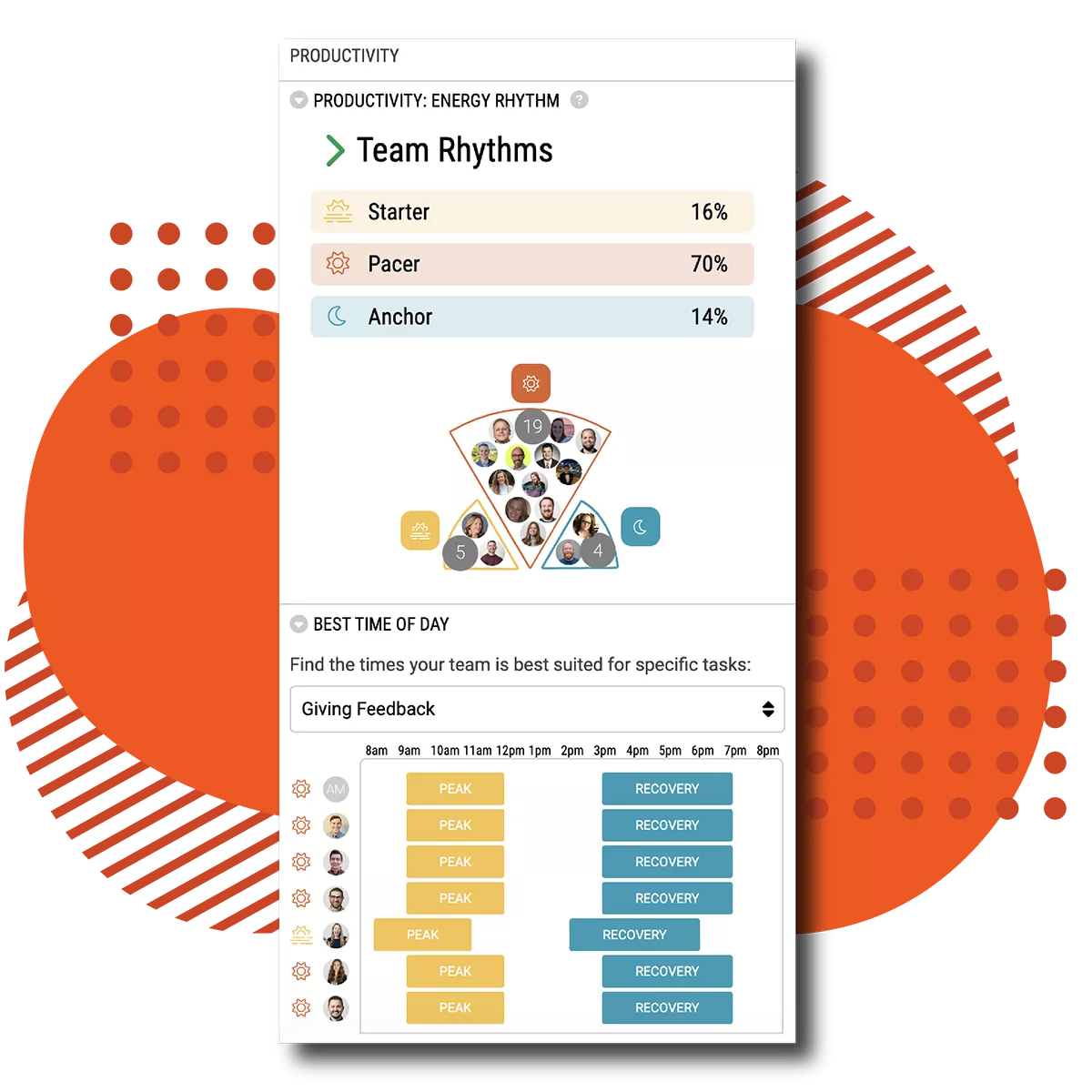
Core Conflict Management Solutions Delivered by Cloverleaf:
1. Anticipating Team Friction: Instead of reacting to conflicts, Cloverleaf enables proactive measures by helping you understand the sources of conflict for every person on your team.
2. Navigating Internal Blind Spots: When internal tensions rise, seeing the overarching issues is challenging. Cloverleaf offers an external lens, bringing clarity and solutions that might be missed from an inside viewpoint.
3. Bespoke Conflict Strategies for Unique Teams: Every team is distinct, and cookie-cutter solutions often fall short. Cloverleaf customizes its approach by merging assessment data and conflict resolution coaching, ensuring that strategies resonate with your organization’s specific needs.
4. Unearthing Deep-Rooted Conflict Triggers: Addressing surface-level issues without understanding the root causes is akin to applying a band-aid on a deep wound. Cloverleaf dives deep to unearth the real reasons behind conflicts, ensuring sustainable resolutions.
5. Skill Enhancement for Modern Managers: Beyond just resolving the current conflict, Cloverleaf’s Automated Coaching™ provides actionable insights, preparing managers for future challenges, enhancing communication, and fostering a culture of continuous learning and improvement.
6. Transforming the Narrative on Conflict: Instead of being seen as roadblocks, conflicts can be growth catalysts. Cloverleaf repositions the perception of conflict, making managers not just problem solvers but also enablers of team evolution and personal growth.
Imagine a workplace where every conversation sparks innovation, where every team meeting leaves you feeling more energized than drained. It’s not just a daydream; it’s the potential reality of a team that understands the profound interplay of personality types and practices the art of conflict resolution. This isn’t about lofty ideals but a practical roadmap to transforming everyday interactions into building blocks for a thriving organizational culture.
In this post, Stephanie Licata and Peggy Murriner, experts in organizational behavior and personality analysis, detail the core of effective teamwork. Through their unique lens, they unravel the complexities of human dynamics in professional settings, offering insights that turn potential workplace conflicts into opportunities for unparalleled growth and collaboration.
Too often, organizations focus merely on the functional role and hope that good team performance somehow follows. This is why even the most expensive professional sports teams often fail to perform according to the individual talents of each player: There is no psychological synergy. A more effective approach (like the mission to Mars example) focuses as much on people’s personalities as on their skills,’ highlighting the critical need for considering personality dynamics within teams. – Harvard Business Review
Stephanie’s expertise in the subtleties of team dynamics converges with Peggy’s innovative approach to personality frameworks. Together, they present a fusion of ideas that will challenge your perceptions, equip you with practical strategies, and inspire a new way of thinking about team interactions.
Whether you’re leading a diverse team, striving to find your place in a complex work environment, or simply curious about the psychological underpinnings of workplace relationships, this conversation is for you.
So, let’s uncover the secrets to working together and excelling in a workplace where every personality type is a valuable piece of the puzzle that can contribute meaningfully to the team.

Decoding Workplace Personality Conflicts: Beyond the Surface Interactions
Team dynamics are often like an iceberg – what we see on the surface is just a fraction of the complex interplay beneath. Unearthing the subtle yet critical aspects of these dynamics is possible by understanding the nuanced differences between conflict perception and the realities of challenging, constructive dialogues in a team setting.
The Nature of Conflict in Teams:
- Perception vs. Reality of Conflict: Stephanie Licata sheds light on a common misconception: Sometimes we perceive that something is going to be a conflict but it’s really just a difficult conversation. It’s a challenging conversation, right? This distinction is crucial in team dynamics, as it differentiates between unproductive personal disputes and the constructive challenges essential for progress.
- Healthy Conflict as a Growth Catalyst: Peggy Murriner observes, The highest performing teams actually allow themselves to engage in healthy conflict. Task conflict, as opposed to personal conflict, can be a powerful tool for team innovation and problem-solving. Adopting this perspective emphasizes that conflict isn’t an obstacle but a driving force for creativity and improvement when managed correctly.
In understanding the nature of conflict within teams, it’s insightful to consider broader workplace trends. According to the Niagara Institute, the most common conflict management style is collaboration, used by 59.8% of professionals, followed by compromise at 24.4%. Interestingly, more confrontational styles like competing, avoiding, and accommodating are less frequently employed.
75% of employees believe their direct manager could handle workplace conflicts better. Moreover, 60% of HR professionals attribute workplace conflicts to poor management. On a positive note, 95% of those who receive conflict resolution training report an improved work environment, underscoring the value of such training.
Leaders and teammates must realize that personal experiences of conflict can heavily influence team dynamics. Understanding that these stories exist and everyone has a personal narrative can help people effectively navigate conflict with empathy.
The Role of Preparation and Individual Conflict Styles:
Being proactive and understanding the unique conflict styles of each person is vital. It’s about striking the right balance between engagement and resolution, ensuring all discussions, no matter how challenging, are geared towards the team’s collective goals.

HUMAN SKILL PROGRAMS ARE HITTING LIMITATIONS...
5 THINGS THIS FREE RESOURCE WILL TEACH YOU
- Close the widening gap between learning and on-the-job application
- Overcome the tension of pausing productivity for development opportunities
- Integrate learning so it is actually in the flow of work
- The evolution of human skill development
- What Automated Coaching™ is and how it works.

The Role of Personality Types in Conflict Resolution
Have you ever wondered why some team disagreements fuel creativity while others end in stalemate?” This question lies at the heart of exploring how personality types shape conflict resolution within teams.
Understanding the intricate role of personality types in conflict is essential for fostering effective team dynamics. Each team member brings a unique approach to handling conflicts, shaped by their inherent personality traits and different perspectives.
Unpacking Personality Dynamics in Conflicts:
Healthy conflict, focused on tasks rather than personal differences, can be a catalyst for a team’s innovative solutions and problem-solving. Successfully managing conflict requires differentiating between personal animosities and constructive debate.
What we often anticipate as a looming conflict is frequently just a necessary, albeit challenging, conversation. – Stephanie Licata
Leaders who acknowledge this insight can better influence how their team approaches what initially appears as conflicts, transforming them into opportunities for open communication and growth.
Leveraging Personality Assessments:
Tools like the 16 Types, DISC, and Enneagram provide a framework for understanding teammates. These assets are not just about categorizing personalities but about gaining deeper insights into how different individuals approach conflict and collaboration. The insights from these tools can be transformative in crafting strategies that play to each team member’s strengths and preferences.
4 Strategies for Navigating Conflicts Between Different Personalities:
- Identify and Adapt to Individual Conflict Styles: Begin by assessing each team member’s preferred style of handling conflict (using tools like DISC or the Enneagram). Then, tailor your approach accordingly. For example, if an individual appreciates directness, address issues head-on with them. If another prefers to avoid conflict, find ways to engage them in dialogue, ensuring their perspective is heard without causing discomfort.
- Promote Constructive Conflict for Innovation: Create a team culture where task-related conflicts are not seen as hurdles but as opportunities for innovation. Celebrate when individuals voice differing opinions on tasks or projects and facilitate these discussions in a structured way.
- Practice Empathy: Develop empathy by seeking to understand each team member’s background and how it shapes their approach to conflict. Use regular one-on-one meetings to understand their perspectives and fears.
- Balance Dialogue and Team Goals: Ensure that all discussions, even when they diverge into conflict, are aligned with the team’s overarching goals. Set clear agendas for meetings where potential conflicts may arise and remind teammates of the common objectives. Facilitate discussions so that the viewpoint of conflicting parties is connected to how it helps or hinders the team’s progress toward these goals.
Managing conflict in the workplace involves a nuanced interplay between understanding and action. It’s about recognizing the fine line between disruptive conflict and healthy debate to harness the latter to nurture an environment where diverse opinions and styles coexist and work together to drive the team forward.

The Key to Effective Communication Among Diverse Personalities Within Teams
Within diverse teams, varied communication styles can often lead to misunderstandings or poor communication. However, by acknowledging and celebrating the diversity in how individuals communicate, teams can unlock more depth in their interactions to create more inclusive and effective teamwork.
Recognizing that there is a spectrum of communication styles and valuing each member’s unique approach can bring a new level of understanding and cohesion, turning potential discord into an opportunity for richer, more inclusive discussions.
In a team, every voice matters. Encouraging and valuing diverse perspectives enriches the conversation and leads to more innovative solutions. – Stephanie Licata.
When teammates truly understand and adapt to the various ways of communicating, what they see as simple conversations can evolve into powerful collaboration tools for untapped potential.
4 Ways To Experience Effective Communication Between Different Personalities
1. Cultivate a Culture of Active Listening: Fully engage with those speaking, try to understand their point of view, and respond thoughtfully. This practice helps ensure all ideas are considered and valued and minimizes miscommunication.
2. Empathy and Emotional Intelligence: Emotional intelligence is a cornerstone of effective team communication. Understanding and responding to the emotional context of communications can create more empathetic and effective exchanges.
3. Regular Feedback and Check-ins: Establish regular feedback and check-ins to maintain open lines of communication within the team. Regular team meetings and one-on-one sessions offer a platform to address concerns, share successes, and reinforce a culture of positive communication.
4. Utilize Communication Tools: Leveraging personality assessments is invaluable in understanding and enhancing team communication. Many tools offer profound insights into a person’s unique way of interacting, work styles, sharing ideas, and receiving feedback.
Dissolving Personality Clashes With Cloverleaf's Insightful Coaching
One of the most effective ways Cloverleaf aids teams is by using personality data from tools like the 16 Types, DISC, and Enneagram to provide Automated Coaching™. These layered insights allow teams to illuminate the diverse ways individuals may engage in different types of conflict and communication. Leveraging this understanding can transform personality issues into a foundation for stronger, more resilient team dynamics.
Given the statistics on conflict management styles and their impact on employees, Cloverleaf’s tools become even more essential. They offer innovative ways to understand and address these challenges, aligning with the preference for collaboration and reducing the negative impacts of conflict.
Embracing a Future of Teamwork Shaped By Self and Other Awareness
The key to unlocking a team’s full potential lies in embracing the diversity of personalities, understanding the true nature of conflict, and harnessing the power of empathetic communication. By adopting these insights, teams can transform challenges into opportunities for growth and innovation.
The future of teamwork is not just about individual competence but about creating psychological safety, where each member’s unique traits and perspectives are valued and integrated into a collective force. It’s about moving beyond the conventional and stepping into a world where every interaction is a chance to learn, grow, and excel together.
We hope you take these lessons to heart, apply them within your teams, and experience the transformation firsthand. If you haven’t already, explore Cloverleaf’s suite of tools to gain deeper insights into your team’s dynamics so every member can thrive.
Mention the word “conflict,” and it often evokes a sense of discomfort or unease. It’s not surprising then that conflict has garnered quite a negative reputation, particularly conflict in the workplace.
However, it’s time to flip the script and view conflict differently. Conflict can serve as a springboard for innovation and enhanced problem-solving when we handle conflict appropriately. Renowned organizational psychologist, Adam Grant, offers a fresh perspective:
The absence of conflict is not harmony; it’s apathy. If you’re in a group where people never disagree, that could only happen if people don’t care enough to speak their minds. – Adam Grant
Let’s pause and reassess our perspective on conflict, focusing on task conflict. This term refers to disagreements about how to achieve a common goal in the work environment.
Leaders can pave the way for ingenuity and out-of-the-box thinking by cultivating an environment that encourages respectful disagreements. In this light, conflict transforms from an intimidating foe to a powerful catalyst for innovative decision-making.
On the other hand, personal conflict is the type we typically like to avoid. Personal conflict surfaces when clashes arise due to deep-seated issues with someone’s attributes or personality, and we internalize it.
Allowing personal conflict to fester creates an unhealthy workplace, undermining morale and productivity. Hence, conflict resolution becomes critical. It’s crucial for every individual, irrespective of their role or level, to build trust and cultivate understanding and empathy for their colleagues and to continually challenge their own preconceptions.
Now that we’ve unpacked the two kinds of conflicts – task and personal – let’s take the conversation further. Should we aim to manage conflict or strive to resolve it completely?
Key Takeaways:
- Conflict, particularly task conflict, can serve as a catalyst for innovation and enhanced problem-solving when handled appropriately.
- Distinguishing between task and personal conflicts is crucial. Task conflicts can often be managed, while personal conflicts typically require resolution.
- Conflict management and resolution strategies can significantly enhance team productivity and morale, such as clear communication, constructive disagreement processes, and understanding of conflict triggers.
- Embracing conflict, rather than avoiding it, can boost team performance, foster workplace harmony, and lead to better overall results.

The Art Of Dealing With Conflict: Knowing When To Manage vs. Resolve
Not every conflict can be neatly resolved like a sitcom plot in a half-hour episode. Some conflicts may involve an ongoing process where the team continuously hammers out disagreements to eventually reach a decision or desired outcome.
Think about conflict surrounding a decision, process, or goal. This type of conflict, often a task conflict, can be managed over time through active listening and effective communication skills. It’s like a simmering pot on a stove – we keep an eye on it, adjust the heat as necessary, stir occasionally, but let it simmer until it’s ready. The urgency to reach a resolution may be less acute than when dealing with personal conflict.
However, personal conflict often requires immediate attention. It’s like a pot boiling over – left unattended, it can create a mess, causing uncomfortable situations, cliques, and a negative atmosphere that threatens team cohesion and productivity. This kind of conflict calls for prompt resolution, nipping the issue in the bud before it drains the team’s energy and time.

HUMAN SKILL PROGRAMS KEEP HITTING THE SAME LIMITATIONS...
Find Out How To Quickly:
- Close the gap between learning and on-the-job application
- Overcome the tension of pausing productivity for development opportunities
- Integrate learning so it is actually in the flow of work
- Scale human skills development to solve business problems
- Prove the ROI of your talent development programs

4 Effective Strategies For Conflict Management
1. Establish Clear Communication Channels: Clarify ground rules where everyone feels comfortable expressing their ideas and concerns, promoting effective conflict resolution.
2. Develop A Constructive Disagreement Process: Create guidelines for handling disagreements, focusing on the issue rather than the individuals involved.
3. Respect Differing Viewpoints: Cultivate a company culture that values diverse perspectives and appreciates differing opinions.
4. Compare Communication Styles: Utilize Cloverleaf’s Automated Coaching Tips to gain insight into each member’s communication style. This understanding can enable individuals to navigate conflicts with greater awareness of how one another communicates.

5 Essential Steps To Resolving Personal Conflicts
1. Create A Safe Environment: Ensure that all members feel secure and respected on common ground, which is the foundation for effective conflict resolution.
2. Initiate One-on-One Discussions: Handle personal conflicts with care, offering private discussions to address the issues directly.
3. Facilitate Mediation: A neutral third party can help facilitate difficult conversations and conflict resolution when conflicts escalate.
4. Involve Human Resources: In certain cases, it may be necessary to involve HR professionals for further assistance, particularly when conflicts risk violating company policy or workplace rights.
5. Understand Conflict Triggers Among Teammates: Utilize the side-by-side comparison feature in Cloverleaf to help employees explore the diverse thinking patterns and motivational factors of their teammates.
Determining the Course of Action: Conflict Management or Conflict Resolution?
Task conflicts can often be managed, as they typically revolve around differing views on a project or task at hand. They can even spur creativity and innovation when navigated correctly. However, personal conflicts, rooted in personal differences or disagreements, can disrupt team harmony and need to be resolved promptly.
3 Ways To Know If You Should Manage Or Resolve The Conflict
To evaluate whether managing or resolving a conflict is necessary, consider the following aspects:
Type of Conflict: If the cause of the conflict revolves around work procedures, roles, or task distribution, it’s likely a task conflict. On the other hand, if the disagreement is based on personal attributes, it’s a personal conflict.
Conflict Impact: Is the conflict disrupting the team’s workflow or affecting the workplace negatively? A conflict that impacts productivity and team morale or fosters hostility requires swift conflict resolution.
Conflict Duration: How long has the conflict been ongoing? A conflict that persists over an extended period, especially personal, could be damaging to the team dynamic and therefore requires immediate conflict resolution.
4 Red Flags That Conflict Is Impacting Team Harmony and Productivity
Conflicts, when left unchecked, can erode employee engagement and hinder productivity. A few signals that a conflict might be affecting your team could be:
Silent Treatment: One of the first signs of reduced communication is the ‘silent treatment’ – emails going unanswered, fewer casual conversations, or abrupt responses. Individuals may begin to withhold important information from each other, impairing collaboration and slowing down progress on tasks.
Enthusiasm Erosion: A drop in morale often shows up as an erosion of enthusiasm. You may notice decreased participation in meetings, lack of initiative, or negative body language. People may seem less eager to contribute, brainstorm, or share their ideas, sapping the team’s energy.
A Revolving Door of Employees: A high turnover rate can clearly indicate a poor conflict resolution process. If employees leave at a higher than usual rate, especially if they’re key members or those with critical skills, this could signal that the work environment has become too hostile or stressful due to unresolved conflicts.
Subpar Deliverables: A decline in the quality of work may be evident in multiple areas – increased mistakes, missed deadlines, or a lackadaisical approach to tasks that were previously done with care.
The added tension and stress from unresolved conflicts can result in team members being less focused or motivated, leading to outputs that are below the usual standard.
Understanding these nuances of conflict and being able to recognize their signs are vital for maintaining a harmonious and productive team. Early identification allows for prompt intervention, whether that means managing the situation or seeking to resolve conflict.

Strategizing for Success: Conflict Management in Everyday Leadership Scenarios
Effective conflict management isn’t just about theory but practical application. So, how can leaders channel conflict to serve their team rather than hinder it?
To understand this better, let’s explore two scenarios from a leader’s perspective:
Scenario #1: Managing Conflict with a Peer
Task Conflict: Imagine you and a peer, both managers, have a difference of opinion regarding a project where your teams have to collaborate. This disagreement stems from your attempts to safeguard your team’s interests.
The instinct might be to defend your stance adamantly, but the key here is to switch gears from talking to listening. Seek to understand the rationale behind your peer’s approach and view it from their perspective.
Instead of pushing your agenda, strive to create a cooperative partnership. A practical approach could be mapping out the pros and cons of each perspective to foster mutual understanding.
Personal Conflict: Picture organizing an employee recognition event alongside a fellow leader. This peer dismisses your ideas and tries to monopolize the conversation, leading to mounting frustration and escalating tension.
In such a situation, asserting boundaries respectfully and without reactive hostility is crucial: “It seems there’s a disparity in our approach, and I feel a bit sidelined. Could we restart the discussion with a mutual agreement to respect and consider each other’s ideas?”
It might feel awkward to vocalize such sentiments, but setting the tone for interaction is essential. Always remember honesty can pave the way for collaboration. Speaking your truth doesn’t mean burning bridges; rather, it sets the foundation for healthier communication and more productive partnerships.
Scenario #2: Mediating Conflict between Two Teammates
Task Conflict: Two team members clashing over a task or project approach isn’t necessarily negative. In fact, their differing viewpoints can be a source of innovation! As a leader, your role is to facilitate a productive dialogue between them.
First, gather the involved parties and encourage them to present their perspectives. Make sure each idea is fully understood by all parties.
Next, provide your own feedback on the suggested approaches, then encourage each team member to recognize the value in the opposing idea. Foster a spirit of collaboration rather than competition.
Finally, challenge them to jointly create the best possible solution, leveraging their newfound mutual understanding.
Personal Conflict: Navigating personal conflicts between teammates can be challenging, but with a systematic approach, resolution is attainable.
First, arrange a meeting in a neutral setting, ideally after both parties have had time to cool off from the immediate heat of the conflict.
Next, guide each person to articulate the conflict and their feelings in clear terms, focusing on behaviors and desired changes. Encourage the use of “I” statements to avoid blaming.
Facilitate active listening by having each party restate what the other has expressed.
Then, summarize the conflict based on what you’ve heard and secure agreement from both parties on the identified issues.
Conclude the meeting by fostering a sense of teamwork. Encourage the parties to acknowledge each other’s efforts and thank them for their commitment to resolving the conflict.
Remember, your role as a leader isn’t just to extinguish fires—it’s to help your team navigate through them to come out stronger on the other side.
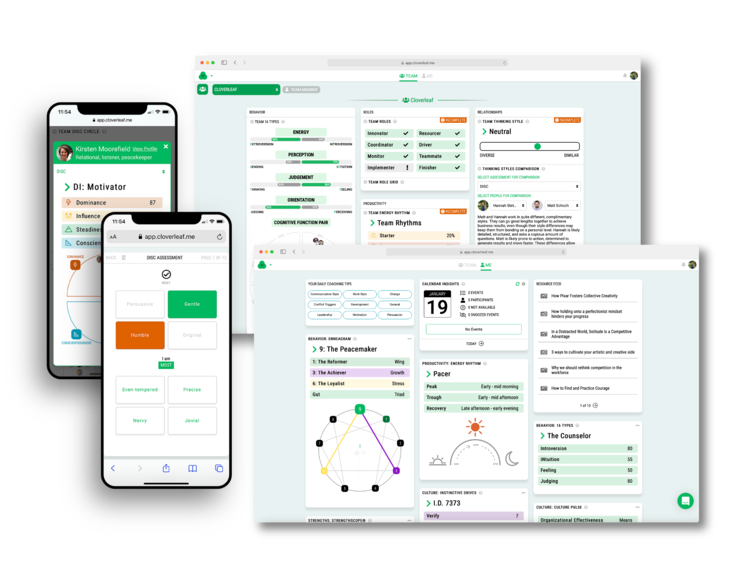
Embracing Conflict, Not Escaping It Is The Solution
Leaders inadvertently set the stage for more complex and increasingly difficult issues to manage by avoiding conflict. Often, conflict arises from misconstrued intentions and assumptions about others. That’s why gaining insights into your team’s dynamics is crucial for effective conflict management and resolution.
Leveraging platforms like Cloverleaf can help you foster better understanding and synergy in your team’s interactions, accelerating conflict resolution and fostering a stronger, more cohesive organization.
Visibility into the communication styles, work approaches, and intentions of colleagues can significantly bolster team cohesion, and improve collaboration, impacting organizational effectiveness.
Schedule a meeting today to learn how Cloverleaf can help you develop the leaders who manage teams.
Final Thoughts
Embracing and understanding conflict is a powerful strategy to boost team performance, foster workplace harmony, and increase organizational effectiveness. The key lies in recognizing the type of conflict at play, appreciating its impacts, and navigating it effectively – either through management or resolution. Remember, conflict isn’t the enemy – it’s how we handle it that makes all the difference.
In today’s increasingly diverse and globally distributed teams, fostering a culture of inclusivity and understanding is essential. One key aspect of promoting this inclusive environment is addressing unconscious bias in the workplace.
Unconscious bias, sometimes called implicit bias, refers to the attitudes and beliefs we unknowingly hold towards others, often stemming from stereotypes and societal expectations. These biases can significantly impact our interactions and decisions, potentially leading to discrimination, exclusion, and unhealthy workplace culture.
The harmful impact of workplace bias is starkly illuminated in a survey where an alarming 33% of those subjected to bias report feelings of alienation. Equally concerning is that 34% of employees facing bias choose to hold back their ideas and solutions. And a massive 80% would hesitate to recommend their employer to others.
These are clear indications of the long-term damage to an organization’s reputation and ability to attract and retain top talent. The importance of addressing unconscious bias in the workplace cannot be overstated.
Organizations can create more inclusive, productive, and engaging work environments by recognizing and actively working to eliminate these biases. This, in turn, benefits not only individual employees but also the overall success and growth of the company.
The following sections will explore unconscious biases, how they manifest in workplace interactions, and practical strategies for preventing and overcoming them to create an inclusive workplace.

Understanding Key Unconscious Biases:
Understanding the different types of unconscious bias is crucial for addressing and mitigating their impact in the workplace. While there are many forms of unconscious bias, we will focus on six common types that are particularly relevant to the recruitment process, hiring decisions, and work environment.
6 PREVALENT FORMS THAT IMPACT THE WORKPLACE
1. Affinity Bias
Affinity bias occurs when we unconsciously favor individuals with similar characteristics, backgrounds, or interests. This can lead to preferential treatment and less diverse teams, as people may inadvertently gravitate towards others who remind them of themselves.
2. Confirmation Bias
Confirmation bias is the tendency to seek out and interpret information in a way that confirms our pre-existing beliefs and assumptions. In the workplace, this can manifest as a manager overlooking an employee’s positive attributes or accomplishments simply because they have already formed a negative opinion about them.
3. Halo Effect
The halo effect refers to viewing someone in an overly positive light due to one outstanding quality or achievement. This can lead to biased evaluations and expectations, as individuals may be given more opportunities or responsibilities based on an inflated perception of their abilities.
4. Horns Effect
The horns effect is the opposite of the halo effect. It occurs when one negative characteristic or incident unfairly colors our perception of an individual, causing us to overlook their positive attributes or accomplishments. This can result in missed opportunities for growth and development within the workplace.
5. Attribution Bias
Attribution bias refers to attributing our successes to our efforts and abilities while blaming failures on external factors. Conversely, we often attribute others’ successes to external factors and their failures to personal shortcomings. This bias can lead to unfair judgments of employees’ performance and potential.
6. Racial and Gender Bias
Gender and racial biases are specific types of unconscious bias manifesting as discriminatory attitudes, beliefs, or stereotypes based on a person’s gender or ethnicity. These biases can lead to discrimination and exclusion within the workplace, limiting opportunities and advancement for underrepresented groups of people.
By familiarizing ourselves with different forms of unconscious bias, we can become more aware of how they may manifest in our daily interactions with teammates. This heightened awareness is the first step towards addressing and mitigating their negative impact in the workplace.

HUMAN SKILL PROGRAMS ARE HITTING LIMITATIONS...
5 THINGS THIS FREE RESOURCE WILL TEACH YOU
- Close the widening gap between learning and on-the-job application
- Overcome the tension of pausing productivity for development opportunities
- Integrate learning so it is actually in the flow of work
- The evolution of human skill development
- What Automated Coaching™ is and how it works.

Detecting and Navigating Unconscious Bias in Workplace Interactions
To foster a truly inclusive and equitable work environment, individuals must recognize unconscious bias within themselves and their interactions with coworkers. This section will explore examples of unconscious bias in everyday interactions, common pitfalls in biased performance evaluations, and active listening techniques for detecting and managing preferences.
11 Examples of Unconscious Bias in Everyday Interactions
Unconscious biases can manifest in myriad ways within the workplace, often subtly influencing daily team interactions. By examining personal and relatable examples, leaders can gain valuable insights into how these biases may affect their organization.
1. Exclusionary Conversations: Favoring certain coworkers in group discussions, dismissing others’ ideas based on preconceived notions, or making inappropriate jokes or comments that marginalize specific individuals.
2. Cliques and Homogeneity: Forming cliques with like-minded individuals or those with similar backgrounds.
3. Biased Choices Affecting Fairness and Opportunities: Allowing personal biases to influence decisions on project assignments, promotions, or hiring, potentially disadvantaging qualified candidates.
4. Assumptions About Expertise: Assuming that specific individuals have more or less knowledge or expertise in a particular field based on their gender, race, or age rather than evaluating their actual qualifications and experience.
5. Microaggressions: Making subtle, indirect, or unintentional discriminatory comments or actions towards individuals from marginalized groups.
6. Overlooking Diverse Candidates: Unconsciously ignoring or undervaluing resumes from candidates with non-traditional backgrounds, names, or experiences.
7. Networking Bias: Favoring individuals who are more similar to you or belong to your social circle during networking events or informal gatherings.
8. Unbalanced Workload Distribution: Assigning tasks and projects based on gender, racial, or cultural stereotypes.
9. In-Group Favoritism: Favoring the opinions and ideas of team members who belong to your own social, cultural, or professional group.
10. Mentoring Bias: Selecting mentees or proteges based on personal similarities or shared interests rather than their skills, potential, or needs.
11. Office Space Bias: Assigning office spaces or seating arrangements based on implicit biases, leading to unequal access to resources, collaboration opportunities, or visibility within the organization.

5 Common Pitfalls in Biased Performance Reviews
As leaders striving to foster growth and development within your team, it’s crucial to ensure that performance evaluations are free from unconscious biases. Understanding and addressing potential pitfalls can create a more equitable and supportive environment for all employees.
1. Relying On Stereotypes: Evaluating an employee’s performance based on gender, racial, cultural, age, or personality stereotypes rather than their abilities and achievements.
2. Focusing On Recent Events: Overemphasizing an employee’s recent successes or failures rather than considering their overall performance over an extended period.
3. Comparing Employees Unfairly: Judging an employee’s performance against that of their peers without considering differences in roles, responsibilities, or circumstances
4. The “Similar-to-Me” Bias: Overvaluing employees who share similar interests, life experiences, or characteristics with you, leading to an inflated assessment of their performance and potential.
5. The “Negative Attribution” Bias: Tending to attribute an employee’s mistakes or shortcomings to personal factors while attributing successes to external factors or luck, leading to an unfairly negative evaluation of their performance.
Awareness of and addressing unconscious biases in workplace interactions is crucial for fostering a more diverse, equitable, and inclusive (DEI) environment. By understanding how these biases can manifest in communication, team dynamics, decision-making, and performance evaluations, leaders can take proactive steps to mitigate their impact.
Proactively Addressing and Preventing Unconscious Bias in the Workplace
Tackling unconscious biases proactively is essential for cultivating a workplace where every employee can flourish. A commitment to diversity and inclusion is indispensable for stimulating innovation, boosting employee engagement, and elevating overall business performance.
By championing these values, organizations can harness the power of diverse perspectives, experiences, and skills, resulting in more effective decision-making and problem-solving capabilities.
Furthermore, increasing self-awareness plays a crucial role in this journey. When employees and leaders become more cognizant of their biases, they are better equipped to challenge and change their thought patterns.
To become aware of your own biases, start by educating yourself.
Paying attention to your thoughts and examining your beliefs can help you identify your current assumptions. – Harvard Business Review
This heightened self-awareness reduces bias and fosters empathy and understanding, fostering an environment where every person feels valued and respected.

RESOURCES FOR IDENTIFYING BIASES
The Cloverleaf Team Dashboard is a powerful tool that enables leaders and team members to effectively identify biases within teams, providing an array of benefits and features, such as:
- Comprehensive Insights: Gain a holistic understanding of your team’s strengths, weaknesses, and communication styles to proactively identify and address potential biases.
- Validated Assessments: Access some of the most popular and trusted assortments to gather valuable individual and team dynamics to uncover potential biases.
- Actionable Automated Coaching™: Receive accurate, relevant, in-the-moment coaching nudges on how to address identified biases, enhance collaboration, and improve team performance.
Leveraging comprehensive insights, validated assessments, and actionable coaching empowers users to identify and proactively address potential biases.
5 ACTIVE LISTENING TECHNIQUES FOR COACHING AND MANAGING BIASES
Active listening is essential for detecting and managing unconscious biases in workplace interactions. By employing specific techniques and honing their active listening skills, leaders can foster open communication and promote understanding among teammates.
1. Provide Your Full Attention: Consciously focus entirely on the speaker, avoid distractions, and maintain eye contact. Practice being present in the moment, setting aside personal thoughts or judgments, and providing visual cues (e.g., nodding) to show engagement.
2. Reflect And Paraphrase: Summarize the speaker’s key points in your own words to ensure understanding and show empathy. Practice using phrases like “What I hear you saying is…” or “It sounds like…” to demonstrate that you are actively listening and valuing their perspective.
3. Ask Open-Ended Questions: Encourage further elaboration and exploration by asking open-ended questions that cannot be answered with a simple “yes” or “no.” Practice using phrases like “Can you tell me more about…” or “How did you feel when…” to invite deeper conversation.”
4. Suspend Judgment: Consciously set aside personal biases and opinions while listening to others. Practice active curiosity, seeking to learn and understand the speaker’s perspective, even if it differs from yours.
5. Providing Non Judgemental Feedback: Offer constructive, empathetic, and unbiased feedback. Practice using “I” statements to express your thoughts and feelings without placing blame or judgment on the speaker (e.g., “I understand your concern, and I think it would be helpful if we considered…”).
By incorporating these tips into your daily interactions, you can effectively implement and improve active listening techniques, allowing you to better manage and address unconscious biases in the workplace.
Leadership’s Crucial Contribution to an Equitable Workplace Culture
Leaders play a pivotal role in shaping the culture of a workplace. Their actions, attitudes, and decisions set the organization’s tone and profoundly influence their teams’ behavior. In the context of unconscious bias, leaders have a significant responsibility to foster an equitable and inclusive work environment. Here’s how:
1. Exemplify Inclusive Behavior
As a leader, make a conscious effort to demonstrate inclusivity. Value each member’s unique contributions, celebrate diversity, and ensure fair treatment across the board. Modeling this behavior encourages others to do the same.
Acknowledging and valuing the unique strengths and perspectives of all team members, irrespective of their personality types
For example, incorporating members of each Enneagram Triad in your team could lead to a richer variety of viewpoints. The Gut Triad (Types 8, 9, and 1) brings instinct and intuition to the table. The Heart Triad (Types 2, 3, and 4) adds emotional intelligence and empathy, while the Head Triad (Types 5, 6, and 7) contributes intellect and analytical thinking.
Similarly, by considering all DISC profile types (Dominance, Influence, Steadiness, and Conscientiousness), leaders can ensure a balance between assertive, people-oriented, steady, and analytical personalities respectively. This balance can promote comprehensive decision-making and effective communication within the team.
16 Types also provides insight into a range of personalities that leaders can use to foster a well-rounded and balanced team.
Leaders can celebrate inclusivity in a deeper sense by intentionally including and valuing members with diverse personality types. Going beyond obvious characteristics like race, gender, and age to value diversity in thought, perspective, and approach.
Don’t limit yourself or your team to a single perspective; remember, the more assessments you engage with, the richer your understanding becomes. Start your journey towards a more cohesive and productive team today by taking your first assessment at Cloverleaf!
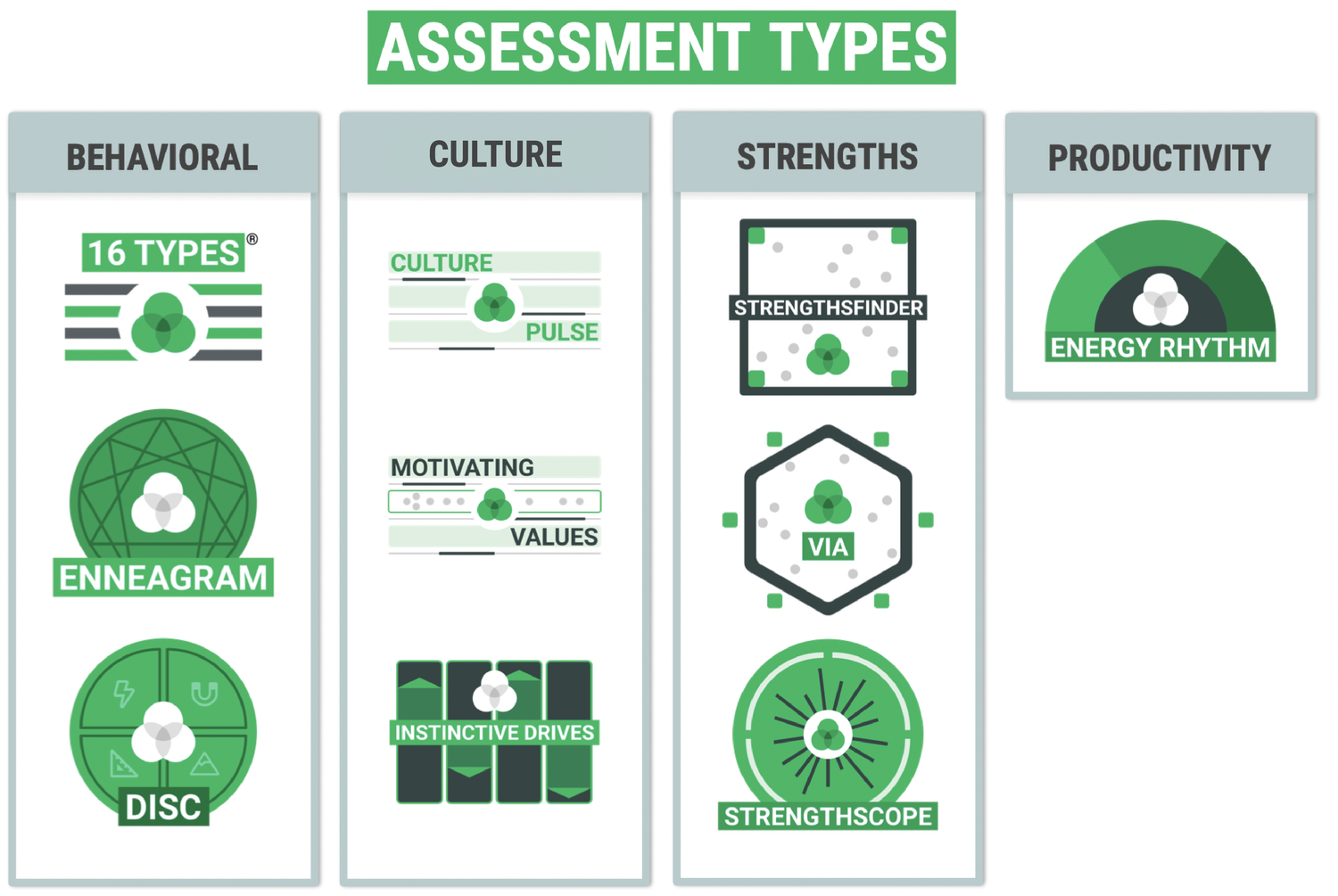
Take A Cloverleaf Assessment
By taking assessments and getting actionable insights on your results, you’ll learn something new about yourself and your team.
- Unlock your team's full potential and try Cloverleaf today.
2. Implement Diverse And Inclusive Policies
Champion diversity and inclusion by establishing diverse hiring practices and offering equal growth and development opportunities. Create policies that discourage discrimination and encourage flexibility, ensuring everyone in your team feels supported.
3. Invest In Supportive Resources
Empower ongoing development by utilizing tools and training programs to showcase your commitment to reducing bias.
4. Facilitate Open Dialogue
Foster a culture of open, honest conversations around bias and discrimination. Regularly invite and be receptive to feedback, and take prompt action to address any issues that arise.
5. Monitor And Rectify Bias
Regularly assess the workplace for signs of bias. Solicit input from employees and conduct audits to implement measures to correct these biases swiftly.
By adopting these steps, leaders can ensure their leadership approach actively contributes to a more equitable, inclusive workplace culture.

The Long-Term Benefits of Addressing Bias In The Workplace
The journey to an inclusive and equitable workplace requires unearthing and addressing biases. Employees who feel valued and included are more likely to be committed to their roles, stay with the company longer, and contribute more effectively to the team’s goals.
Promoting a workplace free from bias is not just the right thing to do—it’s an intelligent business strategy that can drive growth, innovation, and success in the long term. It sends a strong message to potential employees, stakeholders, and the public that the company values fairness and equity. Further, an inclusive and equitable workplace attracts top talent from various backgrounds, enhancing the organization’s reputation, retention, and competitiveness in the global market.
Creating better workplaces is paved with awareness, understanding, commitment, and action toward reducing unconscious bias. While the journey may be challenging, the rewards – a truly inclusive, diverse, and equitable workplace where everyone feels valued and empowered – are worth the effort.
One of the most challenging things about being a new manager are the moments we have to have conversations we wish would…have themselves. Going from boss to coach means difficult conversations are an opportunity for growth; for you AND the team member. You will learn more about conflict resolution from the tough conversations than from the easy ones.
How do you learn to have difficult conversations? You have to have them. You have to be willing to be uncomfortable, make mistakes, and learn from them.
Why Do We Hate Difficult Conversations?
We all arrive in our roles bringing our entire lives up until this moment. The environments we grew up in shape our view of how to communicate, how to interact with conflict (or how to avoid it) and how to empathize.
We don’t teach kids in school all of these crucial conflict management skills. No offense to your favorite math teacher, but perhaps some communication skills could have gotten as much air time as the isosceles triangle?
The adults we become then show up in the workforce with varied viewpoints and have to magically know how to navigate these difficult situations. We hate difficult conversations because we:
- Don’t have the skills to navigate them.
- Don’t want to hurt someone’s feelings.
- Have grown accustomed to avoiding conflict.
There’s actually a huge fallout to avoiding these conversations. According to Bravely, 70% of employees are avoiding difficult conversations with their boss, colleagues, or direct reports. This actually costs companies money, time, and employee engagement.
Types of difficult conversations
Maybe you’ve not come across a difficult situation just yet, but let’s go dive into the deep end and make sure you are ready for these types of conversations:
Addressing differing perspectives and workstyles
- These can be minor and based on interpersonal reasons or even work-specific perspectives that need to be ironed out.
- An ongoing discomfort in your relationship with a team member (i.e. increased misunderstandings, tension, etc).
Identifying a workplace behavior that has a negative impact
- You’ve got a super start on your team, but they tend to roll in Monday morning sharing about their weekend and are TMI gold medalists. Some team members feel a little uncomfortable and before it gets worse, you’ve got to address it.
- You have a team member who has attendance or lateness issues.
- A team member hasn’t been pulling their weight.
Managing conflict between two team members
- Two team members regularly disagree during team meetings causing discomfort for the team and delaying team action.
- There’s been an actual incident in the workplace of conflict that must be addressed ASAP.
- A project is stalled because of conflict between co-workers.
Having to fire someone
- Negative performance has been a pattern and after all appropriate action has been taken according to HR. You have to let the person go.
- Budget cuts or layoffs are impacting the company and a person’s position is being eliminated.
Starting Difficult Conversations
The reality is these types of conversations usually cannot wait. The impact of waiting can make the impact even worse for the individual, your team and yes…you. Similarly with giving feedback, how you START the conversation can really set the tone for a productive face-to-face interaction. Here’s some conversation starters that help to level the playing field as you approach a conflict situation:
- “There’s something I think we should discuss that will help improve our working relationship.”
- “I’d like to talk about ____________ with you, but first I’d like to get your point of view.”
- “I think we have different perspectives about ____________. I’d like to understand how you are thinking about it.
- “I’d like to see if we can come to a mutual understanding regarding___________. I really want to understand where you are coming from and also share my perspective.”
These difficult conversation starters help to interrupt fear and make it clear that this will be an exchange. Notice there is no judgment about the differences that may be present. This is part of becoming a good leader. Embracing that there are people who have valid perspectives that you may not agree with and understand is critical to being able to create mutual respect as you collaborate and lead others.
Difficult Conversation Planning Strategies
For all you color coded planners out there, YES you can plan for a difficult conversation. However you don’t want to OVERPLAN. Let some of it be organic. It’s tough to trust yourself but remember you can always criticize yourself with some self-deprecating humor later with a friend. Here’s a helpful guide to preparing for these conversations:
- Determine the desired outcomes from the conversation, for YOU and the team member.
- Pick your conversation opener. Don’t overscript it, but have a general idea.
- Remember to use your active listening skills to better understand the person’s point of view, even if you don’t agree.
- What are the MOST important things you need to get across?
- What information do you need (if any) to support the conversation?
- Anticipate some possible responses and consider how you will handle each one. This is not supposed to freak you out, it’s just to give you some batting practice for the big game.
- What is the BEST case scenario? (Yes, let’s get positive going into this. We often go to a place of gloom and doom, making crucial conversations like this more difficult than they have to be.)
- What are the next steps you need to communicate in conversation (i.e. does this conversation require any follow up?
Remember our FEAR about these challenging conversations is usually bigger than the actual conversation. You will often let out a huge sigh of relief after you have one, so remind yourself of the COST of waiting. Go all Nike on this one and just DO IT!

HUMAN SKILL PROGRAMS ARE HITTING LIMITATIONS...
5 THINGS THIS FREE RESOURCE WILL TEACH YOU
- Close the widening gap between learning and on-the-job application
- Overcome the tension of pausing productivity for development opportunities
- Integrate learning so it is actually in the flow of work
- The evolution of human skill development
- What Automated Coaching™ is and how it works.

